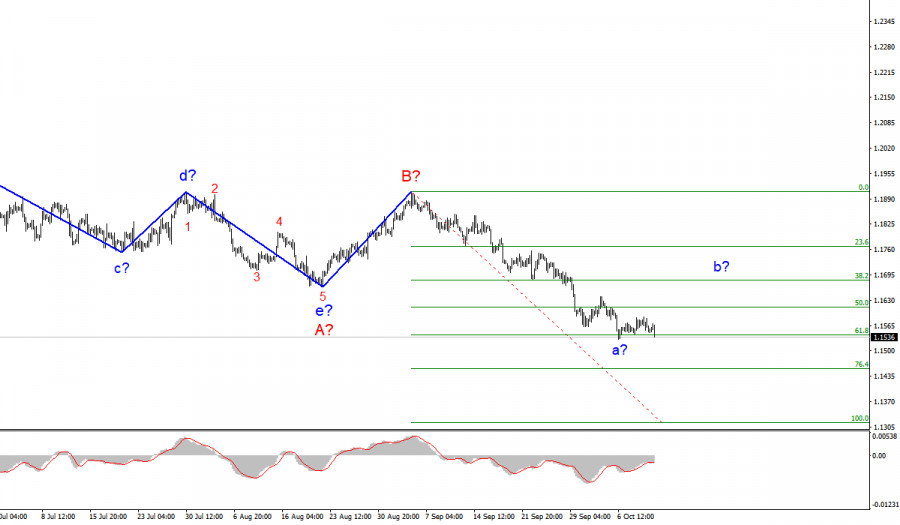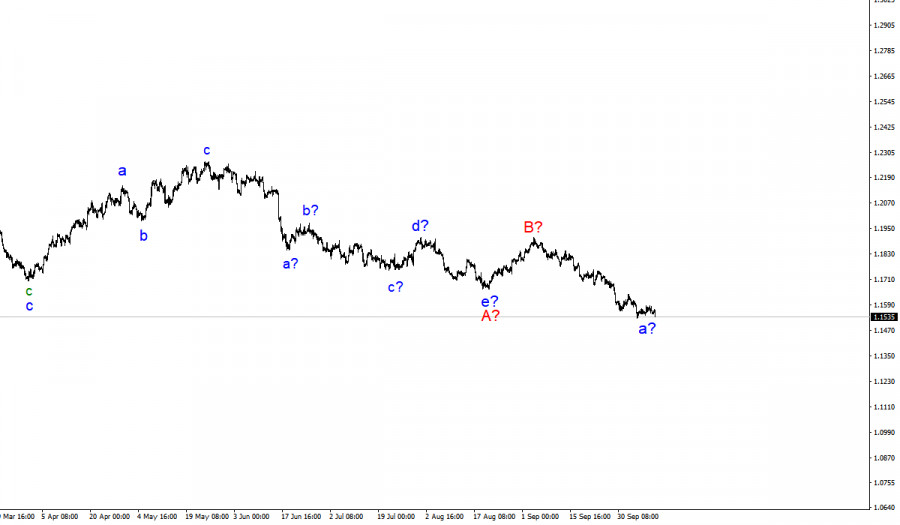Wave pattern
The wave counting of the 4-hour chart for the Euro/Dollar instrument suffered certain changes after the quotes fell below the low of the previous wave. The construction of the downward trend section has resumed, so now the trend section a-b-c-d-e, which was formed from the very beginning of the year, is interpreted as wave A, and the subsequent increase of the instrument is interpreted as wave B. If this assumption is correct, then the construction of the supposed wave C has now begun and is continuing, which can take a very extended form, given the size of wave A and the size of wave a in C. And the whole section of the trend, which originates on May 25, may again take the corrective three-wave form A-B-C. Thus, the probability of further decline of the instrument remains high, since only one wave is visible inside wave C, and it should turn out to be at least three-wave. At the moment, there are no signs of building even a corrective wave b.
Will the inflation report stop the rise of the US currency?
There was no news background for the euro and the dollar on Tuesday. There was not a single economic report or any other important event during the day. Nevertheless, in the afternoon, the markets found reasons for new purchases of the US currency. Again - for restrained and small purchases, but the demand for the US currency remains stable and does not decrease. Thus, once again the construction of wave b is postponed to a later date, and wave a continues to become more complicated. Tomorrow the situation may change, or it may worsen for the European currency; as many as two important events can significantly affect the mood of the markets. First of which is the report on US inflation.
Right now, Fed's attention is on the inflation rate and Nonfarm Payrolls and is set to make a decision in November on QE, based on these data. The nonfarm payrolls report has already disappointed, but the US dollar is still in demand. What will happen if the inflation report also disappoints? Although it remains quite difficult to say exactly which value of the consumer price index will be disappointing. If inflation starts to accelerate again, it will be bad for the economy, but good for the dollar (in recent times, when inflation has been rising, the dollar has also been rising). If inflation continues to slow down, then nothing will prevent the markets from "not paying attention to it", just as they did not pay attention to weak nonfarm payrolls data.
General conclusions
Based on the analysis, I conclude that the construction of the downward wave C will continue. Therefore, now I advise selling the instrument for each downward signal from the MACD, with targets located near the calculated marks of 1.1454 and 1.1314, which corresponds to 76.4% and 100.0% Fibonacci levels. A repeated unsuccessful attempt to break through the 1.1540 mark, which corresponds to 61.8% Fibonacci, will again indicate the inability of the markets to build a corrective wave.
The wave counting of the higher scale looks quite convincing. The decline in quotes continues and now the downward section of the trend, which originates on May 25, takes the form of a three-wave corrective structure A-B-C. Thus, the decline may continue for several more months until wave C is fully completed.
The material has been provided by InstaForex Company - www.instaforex.com

